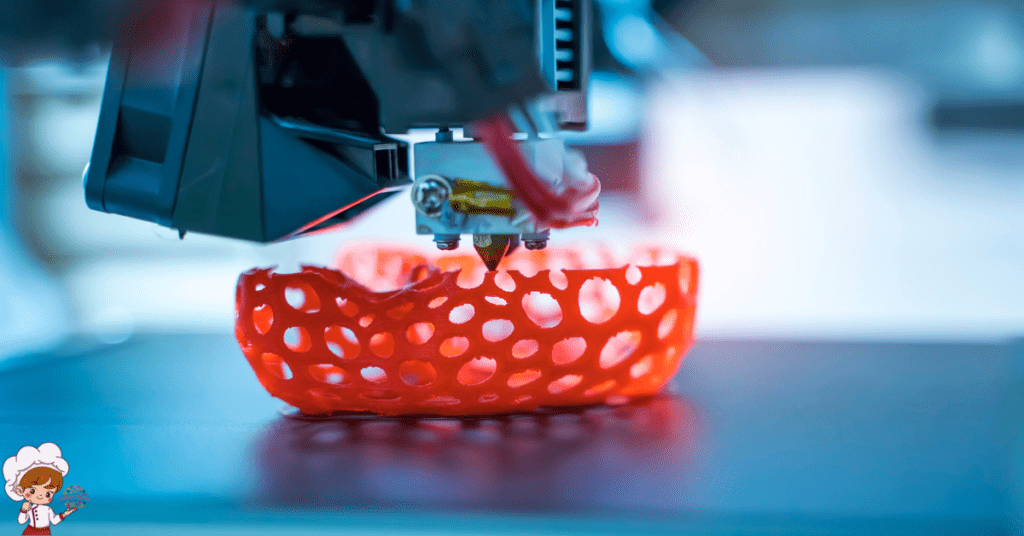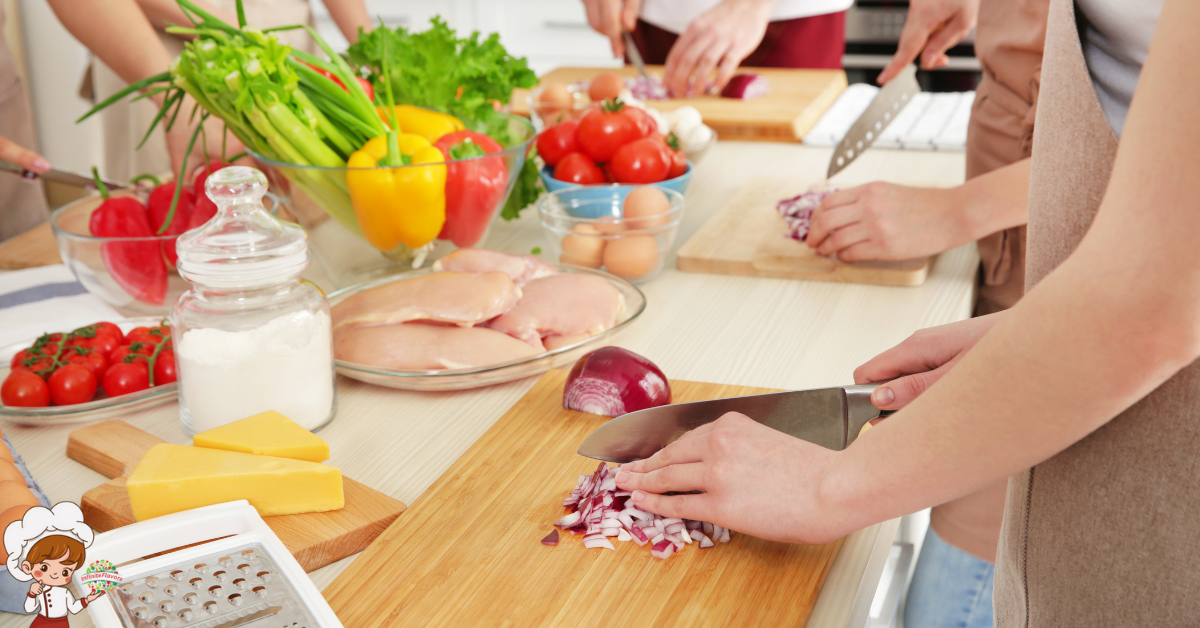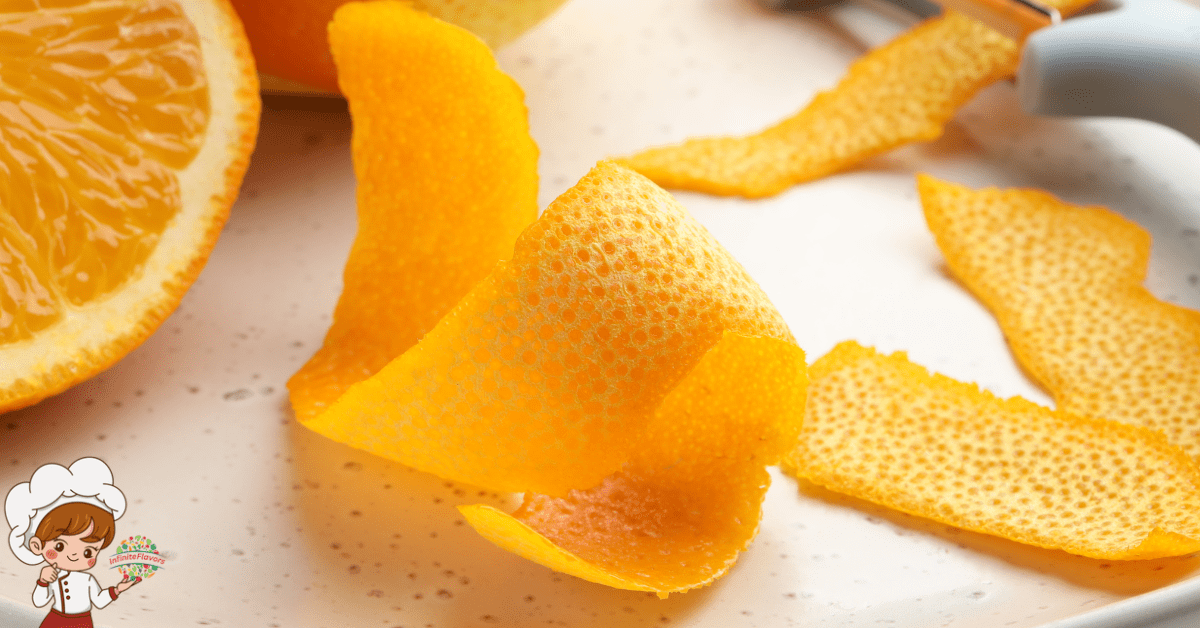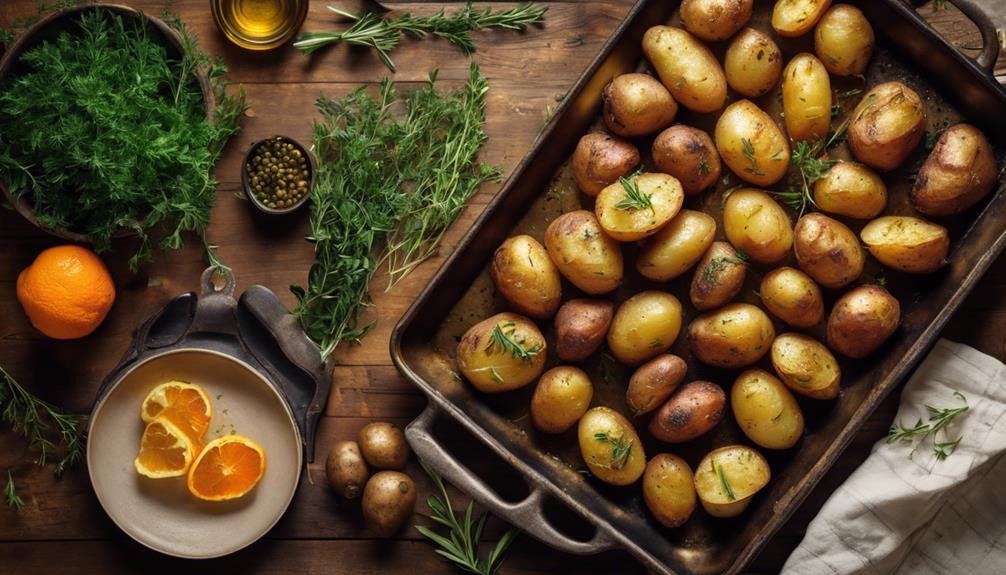Amazing Customized Nutrition Through 3D Food Printing

Customized Nutrition Through 3D Food Printing transforms your meal experience by tailoring it to your dietary preferences and nutritional needs. This innovative technology layers ingredients to create precise, visually appealing dishes while minimizing food waste by using exactly what you need. You can adjust nutrient profiles to align with your health goals, like incorporating essential vitamins or accommodating specific dietary requirements. Plus, it encourages sustainability by sourcing ingredients responsibly. As culinary technology evolves, there’s much more to discover about its impact on nutrition and dieting.
What Is 3D Food Printing?
3D food printing is an innovative technology that combines culinary art with advanced engineering. You might think of it as a way to transform traditional food design into something extraordinary. This printing process utilizes 3D technology to layer ingredients, creating intricate shapes and textures that were once unimaginable in the culinary domain.
As you explore this domain of culinary innovation, you’ll discover how it allows for nutritional customization, enabling you to tailor meals to meet specific dietary needs. Imagine adapting recipes on-the-fly, adjusting not just the ingredients but also the flavor profiles to suit your preferences.
Creative gastronomy comes alive through 3D food printing, where chefs can experiment with unusual combinations and presentation techniques. The ability to manipulate ingredients at such a granular level opens doors to endless possibilities in food design. Whether you’re crafting a visually stunning dessert or a savory dish, the printing process empowers you to push the boundaries of what’s possible. In this exciting landscape, you can redefine your culinary experience, making each meal a unique masterpiece that’s both visually appealing and delicious.
Benefits of Customized Nutrition
Customized nutrition lets you enjoy meals specifically designed for your unique dietary needs and preferences. With tailored nutrient profiles, you can guarantee you’re getting the right vitamins and minerals your body craves. Plus, it enhances your dining experience by catering to your personal tastes, making every bite enjoyable and nutritious.
Tailored Nutrient Profiles
Tailored nutrient profiles offer a groundbreaking approach to nutrition that meets individual health needs. By customizing your meals, you can achieve ideal nutrient optimization that aligns with your specific dietary requirements. This means that whether you’re managing a health condition, aiming to lose weight, or simply seeking better overall wellness, your food can be designed to support your goals.
With the help of 3D food printing, you can easily incorporate the right balance of vitamins, minerals, and macronutrients into your diet. You don’t have to guess what you need; instead, you can rely on precise data from health tracking tools that monitor your body’s unique response to different nutrients.
This personalized approach guarantees that every bite you take contributes positively to your health journey. Imagine enjoying meals that not only satisfy your taste buds but also align perfectly with your nutritional goals. Tailored nutrient profiles empower you to take control of your health, making it easier to nourish your body in a way that feels good and works for you. Welcome to a new era of eating, where customization leads to a healthier, happier you.
Enhanced Dietary Preferences
Enhanced dietary preferences allow you to enjoy meals that not only suit your taste but also align with your lifestyle choices. With 3D food printing, you can experience a level of dietary inclusivity that’s hard to achieve with traditional cooking methods. Whether you’re vegan, gluten-free, or following a specific diet plan, you can customize meals to meet your needs.
Flavor customization is another major benefit. Imagine crafting dishes that cater to your palate while remaining nutritious. You get to choose ingredients that enhance both the taste and the health benefits of your meals. This personalization means you won’t have to compromise on flavor while aiming for healthier options.
Moreover, this technology allows you to experiment with different textures and presentations, making every meal an exciting experience. You can create visually appealing dishes that are not only delicious but also fun to eat. This level of engagement with your food can improve your overall relationship with nutrition, making it easier to stick to healthy choices. By embracing enhanced dietary preferences, you’re not just nourishing your body—you’re also indulging your senses.
How 3D Printing Works
3D printing technology transforms digital designs into physical objects by layering materials in a precise manner. This process, known as additive manufacturing, allows you to create customized food items that cater to individual preferences and dietary needs. In the domain of food technology, this culinary innovation offers remarkable design flexibility, enabling chefs and manufacturers to experiment with shapes and textures previously thought impossible.
When you engage in 3D food printing, material selection plays an essential role. You can choose from a variety of edible materials, such as pureed fruits, vegetables, and proteins, to achieve the desired flavor and nutritional accuracy. This flexibility not only enhances the dining experience but also encourages consumer engagement, as people become more involved in the creation of their meals.
Moreover, 3D printing improves production efficiency. It minimizes waste by using only the amount of material needed for each design, making it a sustainable option in the culinary world. By harnessing these benefits, you open the door to a new era of personalized and healthy eating, where technology meets tradition in the most innovative ways.
Personalizing Dietary Needs
With the rise of customized nutrition, you can now address your unique dietary needs like never before. 3D food printing technology allows you to create personalized diets tailored specifically to your health goals and preferences. Whether you’re dealing with nutritional deficiencies or simply want to enhance your overall well-being, this innovative approach puts you in control.
Imagine being able to print meals enriched with the exact vitamins and minerals your body craves. You can specify ingredients that cater to your taste while ensuring you meet your dietary requirements. For instance, if you struggle with iron deficiency, you can incorporate iron-rich ingredients into your meals, ensuring you’re not just eating for pleasure but also for health.
Moreover, 3D food printing can help you experiment with textures and flavors, making healthy eating enjoyable. You’re no longer limited to standard meal plans; you can design dishes that are both nutritious and delicious. By embracing this technology, you can take proactive steps toward overcoming nutritional deficiencies and achieving your personal health objectives through truly personalized diets.
Impact on Sustainability
As you explore the benefits of customized nutrition, the impact on sustainability becomes increasingly relevant. 3D food printing not only allows for personalized meal creation but also greatly reduces food waste. By using precise amounts of ingredients, you minimize leftovers and guarantee every part of your meal is utilized.
Additionally, 3D food printers often rely on sustainable sourcing of materials. You can choose ingredients that are not only nutritious but also ethically produced, which further enhances the environmental impact. By opting for locally sourced, plant-based, or alternative proteins, you support sustainable agriculture and decrease the carbon footprint associated with food production.
Moreover, this technology can adapt to seasonal availability, promoting the use of fresh, local produce. This means you’re not only eating healthier but also contributing to a more resilient food system.
Future Trends in Food Printing
Exploring future trends in food printing reveals exciting possibilities that could revolutionize how we approach nutrition. As technology advances, you’ll likely see a rise in automated kitchens equipped with 3D food printers that can create customized meals tailored to your dietary needs. Imagine walking into your kitchen and simply inputting your nutritional preferences, and within minutes, your meal is ready—perfectly portioned and personalized.
Culinary innovation will drive this transformation, allowing chefs and home cooks alike to experiment with flavors, textures, and even aesthetics. You’ll have access to a wider range of ingredients, from alternative proteins to functional additives, enabling you to craft meals that not only taste great but also support your health goals.
Additionally, the integration of artificial intelligence will play an essential role in optimizing recipes and meal plans based on your unique preferences and health data. As these advancements unfold, food printing could become a staple in your daily life, making nutritious eating not just easier but also more enjoyable. The future of food printing promises to enhance your culinary experience while prioritizing your health and wellness.
Challenges and Considerations
The promise of customized nutrition through 3D food printing isn’t without its challenges and considerations. First, you’ll face regulatory hurdles that can slow down innovation. Maneuvering food safety standards is vital, and it requires compliance with existing food laws. Additionally, technology limitations can hinder the complexity of designs and the range of materials used in food printing.
Ethical concerns also arise, particularly regarding ingredient sourcing and the impact on traditional food systems. You might wonder if consumers will accept this new technology; after all, some people are wary of processed foods. Gaining consumer trust is essential for widespread adoption.
Cost implications can’t be ignored either. The initial investment in 3D food printers and the ongoing costs of specialized ingredients could limit accessibility for many. Furthermore, ingredient availability plays a significant role; if essential components are hard to find, your options for customization may dwindle.
Frequently Asked Questions: Customized Nutrition Through 3D Food Printing
What Types of Foods Can Be Printed Using 3D Technology?
You can print various foods like pasta, chocolates, and even proteins. With flavor customization, you can create unique tastes, while texture modification allows you to adjust firmness and consistency, making each dish truly personalized.
How Long Does It Take to Print a Meal?
When considering meal preparation, printing speed varies based on the printer and meal complexity. Generally, it takes anywhere from 30 minutes to a couple of hours to print a complete meal, ensuring quality and precision.
Are There Any Health Risks Associated With 3D Printed Food?
Yes, there are health risks associated with 3D printed food. You should consider food safety, nutritional value, potential allergens, and guarantee adherence to regulatory standards to minimize any adverse health effects. Stay informed and cautious.
What Materials Are Commonly Used in 3D Food Printing?
In 3D food printing, you’ll find various materials like pureed fruits, vegetables, and proteins. Ingredient sourcing and printing techniques play essential roles in creating textures and flavors, ensuring the final product meets your nutritional needs.
How Much Does a 3D Food Printer Typically Cost?
A 3D food printer typically costs between $1,000 and $5,000, depending on affordability factors like features and materials. Different printer brands offer various options, so you’ll wanna research to find the best fit for you.
Conclusion
To summarize, 3D food printing is revolutionizing how you think about nutrition. It allows you to customize meals to fit your specific dietary needs while promoting sustainability. As technology advances, you’ll likely see even more exciting possibilities in personalized nutrition. Embracing this innovation can lead to healthier eating habits and a more sustainable food system. So, keep an eye on this trend, as it’s shaping the future of how you enjoy your meals!








